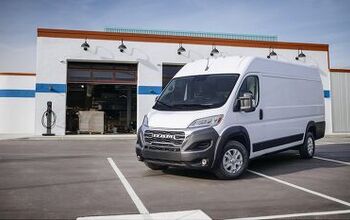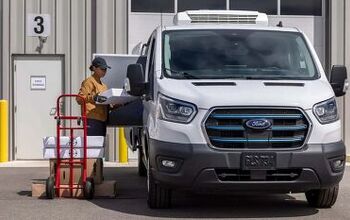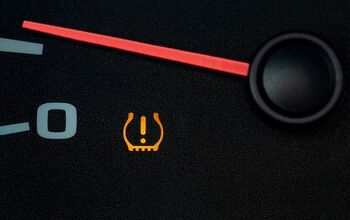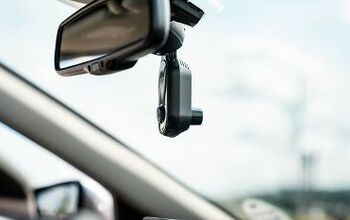The 5 Types of Auto Insurance

Every driver has unique needs, which is why there are so many auto insurance policies to choose from.
With numerous types of auto insurance policies, various coverages within them, and no shortage of add-ons and upgrades, insurance companies give today’s motorist plenty of choice when it comes to auto insurance.
In some locales, certain auto insurance coverage is mandatory. This varies based on location, which is why it’s important for the shopper to begin with an understanding of what sort of insurance coverage is mandatory where they live, and which is not.
Below, we’ll outline some of the common types of general auto insurance. Contact your broker for more information.
Liability Coverage
This auto insurance coverage is typically the starting point, or basis, of any auto insurance plan. That’s because liability coverage is typically mandatory. Put another way, Liability Coverage is usually the ‘bare minimum’ level of insurance required to drive a motor vehicle on public roadways.
Liability coverage solely helps pay for the costs related to injuring someone, or damaging someone’s property, in an accident– and nothing else.
Some drivers choose to carry only this form of limited insurance coverage, though most choose a policy with broader-reaching protection that protects them, and their finances, in more situations.
Uninsured or Underinsured Motorist Coverage
This type of auto insurance coverage helps cope with the costs of being injured by another driver that doesn’t have insurance, or, whose insurance coverage isn’t enough to cover the costs of your injuries and rehabilitation.
It also helps cope with the costs of repairs to your vehicle, if you’re hit by a driver who doesn’t have car insurance at all.
If you’re hit by a driver with Liability Coverage, their policy (as outlined above), helps cover the costs of your medical bills and vehicle repairs– up to the coverage limit of their plan. If you’re hit by a driver with no insurance at all, you may incur even more significant costs.
With Uninsured / Underinsured Motorist Coverage, you’re protected, though availability of these insurance components varies across the country. Talk to your broker for more information.
SEE ALSO: How to Save on Auto Insurance
Collision Coverage
Just as the name implies, collision coverage deals with the costs of damage, if your vehicle is involved in a collision. That collision may involve another motor vehicle, or something like a hydrant, tree, or sign post. Single-vehicle accidents, like rollovers, are covered here as well.
Collision coverage only relates to damage caused by a collision that’s the result of driving. If a windstorm blows a sign post down and it falls on your vehicle, that’s not covered under Collision Coverage (though it is covered elsewhere).
Collision Coverage typically comes with a limit, which is the maximum amount of money that your insurer will pay towards repairing your vehicle if it’s damaged in a collision. This amount is typically similar to the current market value of your vehicle, current age and mileage considered.
Collision Coverage usually includes a deductible, too. That’s the amount you’ll have to pay towards the repair costs. For instance, if your vehicle suffers $9,000 in damage as the result of a collision, and your Collision Coverage includes a $1,000 deductible, then you pay the first $1,000 towards the repair, and your insurance handles the rest.
If the vehicle is totalled and cannot be repaired, your insurer would instead issue a cheque for the current value of your vehicle, less the deductible amount.
Note that vehicles which are leased, financed, or purchased with a loan typically must carry collision coverage as part of the lending agreement.
Comprehensive Coverage
This form of auto insurance coverage helps cover the costs of damage or repairs to your vehicle that do not occur as the result of a collision. Some examples include damage caused by extreme weather, theft or vandalism, animals, fire, and more.
For some drivers, Comprehensive Coverage makes sense. In some cases, Comprehensive Coverage may even be mandatory, for instance if you lease or finance the vehicle. In other cases, Comprehensive Coverage may not be worth the added cost, especially for drivers of an older, higher-mileage vehicle.
Talk to your insurance broker about whether or not you need Comprehensive Coverage, and how to determine if it makes sense for you.
Medical Payments / Medical Expenses Coverage
This part of an auto insurance policy helps cover the costs of medical expenses incurred by you, and your passengers, if you’re injured in a car accident.
Costs relating to health insurance deductibles, doctor visits, surgery, x-rays, nursing, ambulance fees, and more, may be covered by Medical Payments Coverage. Like many car insurance products, this form of coverage has coverage limits and deductibles that will have an effect on the cost of the coverage.
Many drivers choose this form of insurance for added peace of mind, given the possibly-enormous costs of being injured in a car accident, although this type of coverage is not available across the country.
Note that basic Liability Coverage doesn’t necessarily cover all of the medical expenses you, or your passengers, may incur if you’re involved in an accident. That’s where this specialized type of insurance comes in.
Personal Injury Protection (PIP) Coverage
This is another form of auto insurance that helps cover the costs of medical-related expenses incurred by drivers or their passengers after an accident—though with PIP coverage, you’re protected, regardless of who is at fault. This type of coverage may also cover health insurance deductibles, loss of income, child care, funeral, and other expenses.
This type of coverage is optional in some locales, mandatory in others, and unavailable in others still.
Minimum coverage limits are mandated in some states, and insurance companies typically have coverage limits as well.
Talk to your broker for more information.
Conclusion
These are some of the more basic and common forms of car insurance, though many others exist.
Some are specialized towards drivers involved with ride-sharing, others are specifically for owners of classic cars, and some can even help cover the costs of unexpected depreciation when you return a leased vehicle.
For more details, contact your local insurance broker.
Featured Photo Credit: Shutterstock / BLACKWHITEPAILYN

Justin Pritchard, an award-winning automotive journalist based in Sudbury, Ontario, is known for his comprehensive automotive reviews and discoveries. As a presenter, photographer, videographer, and technical writer, Justin shares his insights weekly through various Canadian television programs, print, and online publications. In 2023, Justin celebrated a significant milestone, airing the 600th episode of his TV program, AutoPilot. Currently, he contributes to autoTRADER.ca, Sharp Magazine, and MoneySense Magazine. His work as a technical writer, videographer, presenter, and producer has been recognized with numerous awards, including the 2019 AJAC Video Journalism Award and the 2018 AJAC Journalist of the Year. Justin holds a Bachelor of Commerce (Hons) from Laurentian University, which he earned in 2005. His career in automotive journalism began that same year at Auto123.com. Since then, he has written one of the largest collections of used car buyer guides on the internet. His passion for photography, nurtured from a young age, is evident in his work, capturing the scenic beauty of Northern Ontario. Living in a region with a particularly harsh winter climate has made Justin an expert on winter driving, winter tires, and extreme-weather safety. Justin’s significant achievements include: 2019 AJAC Video Journalism Award (Winner) 2019 AJAC Road Safety Journalism Award (Runner-Up) 2019 AJAC Automotive Writing (vehicle review topics) (Winner) 2019 AJAC Automotive Writing (technical topics) (Winner) 2018 AJAC Journalist of the Year You can follow Justin’s work on Instagram @mr2pritch and YouTube @JustinPritchard.
More by Justin Pritchard


































Comments
Join the conversation